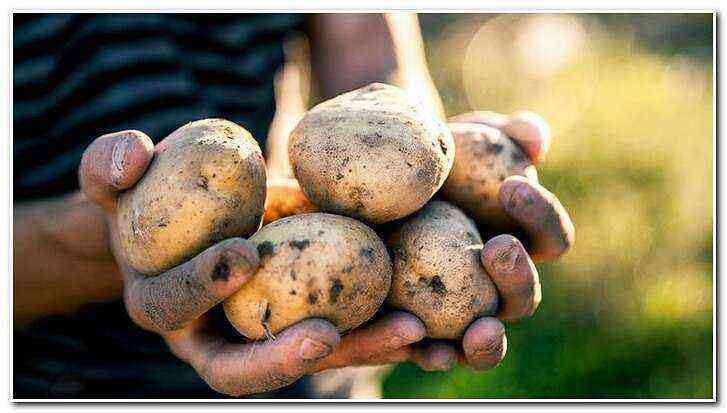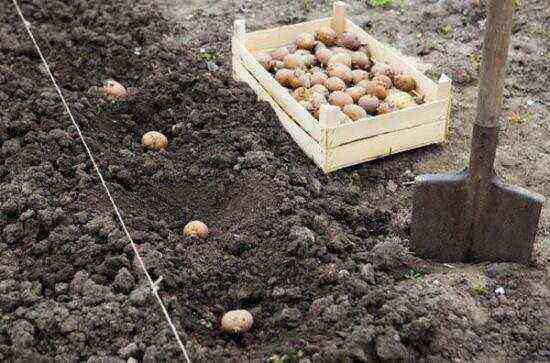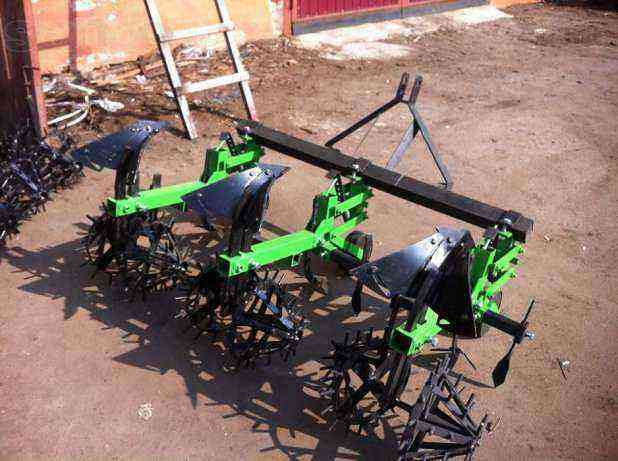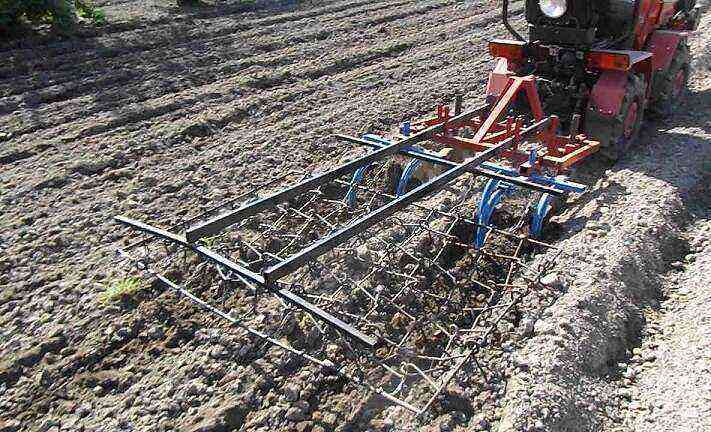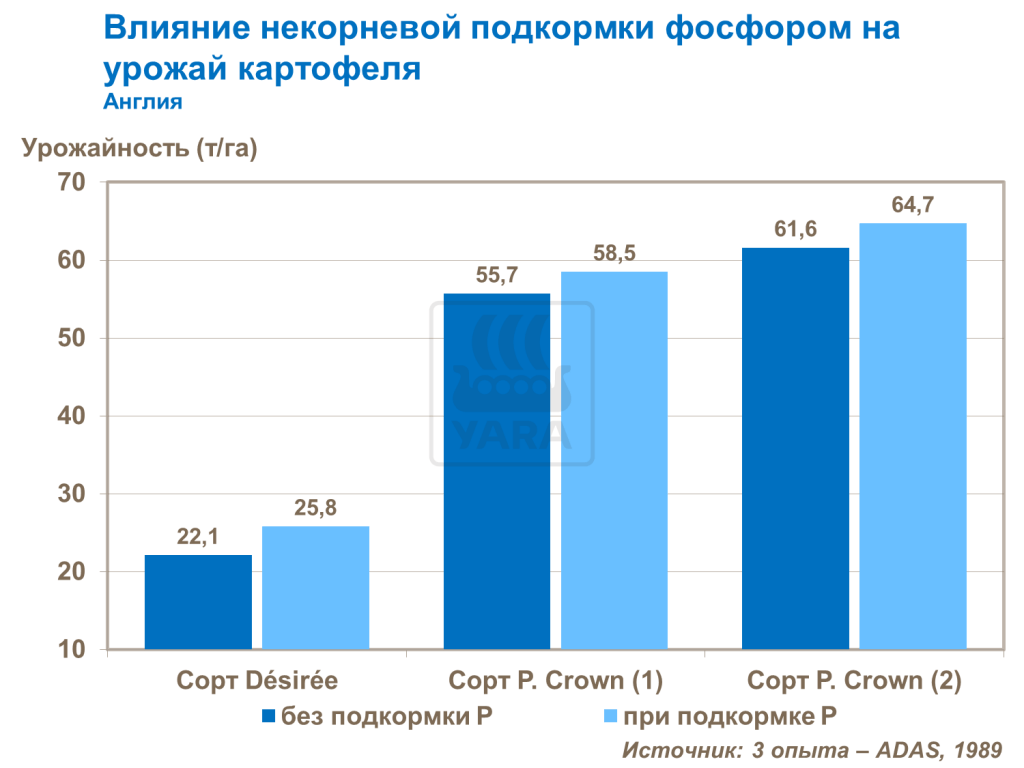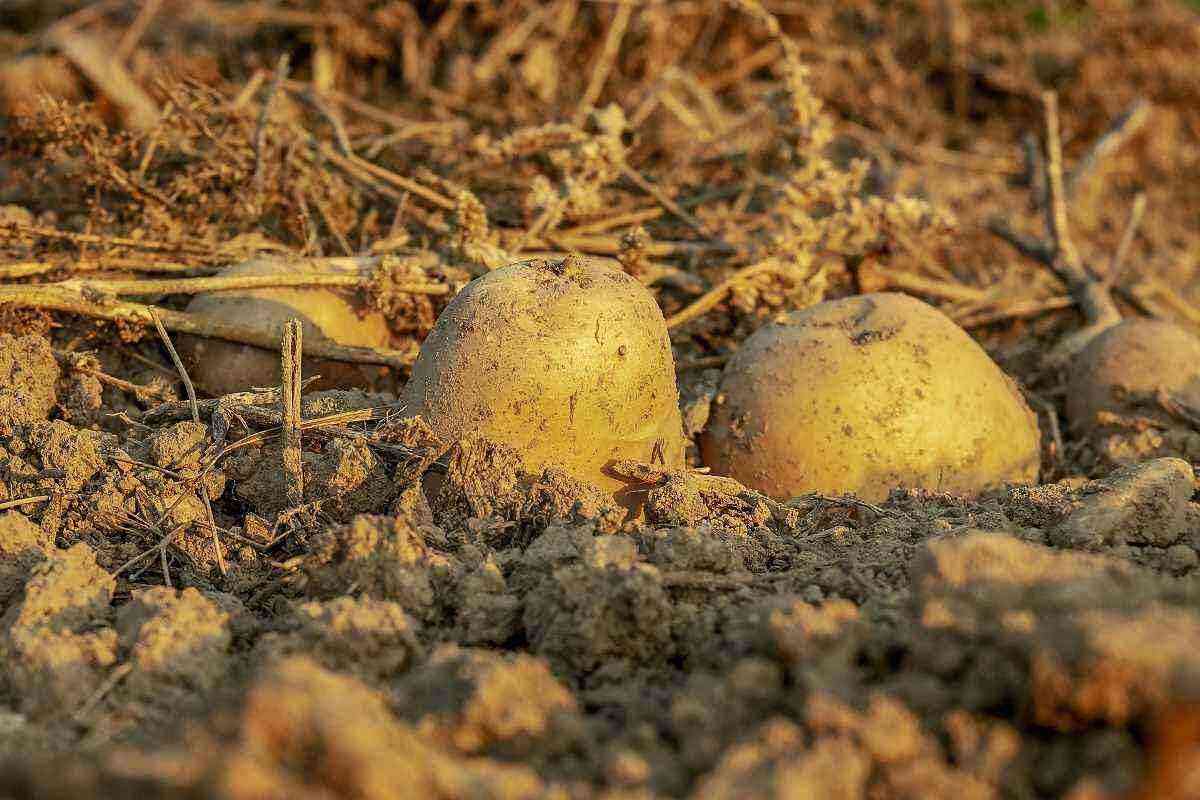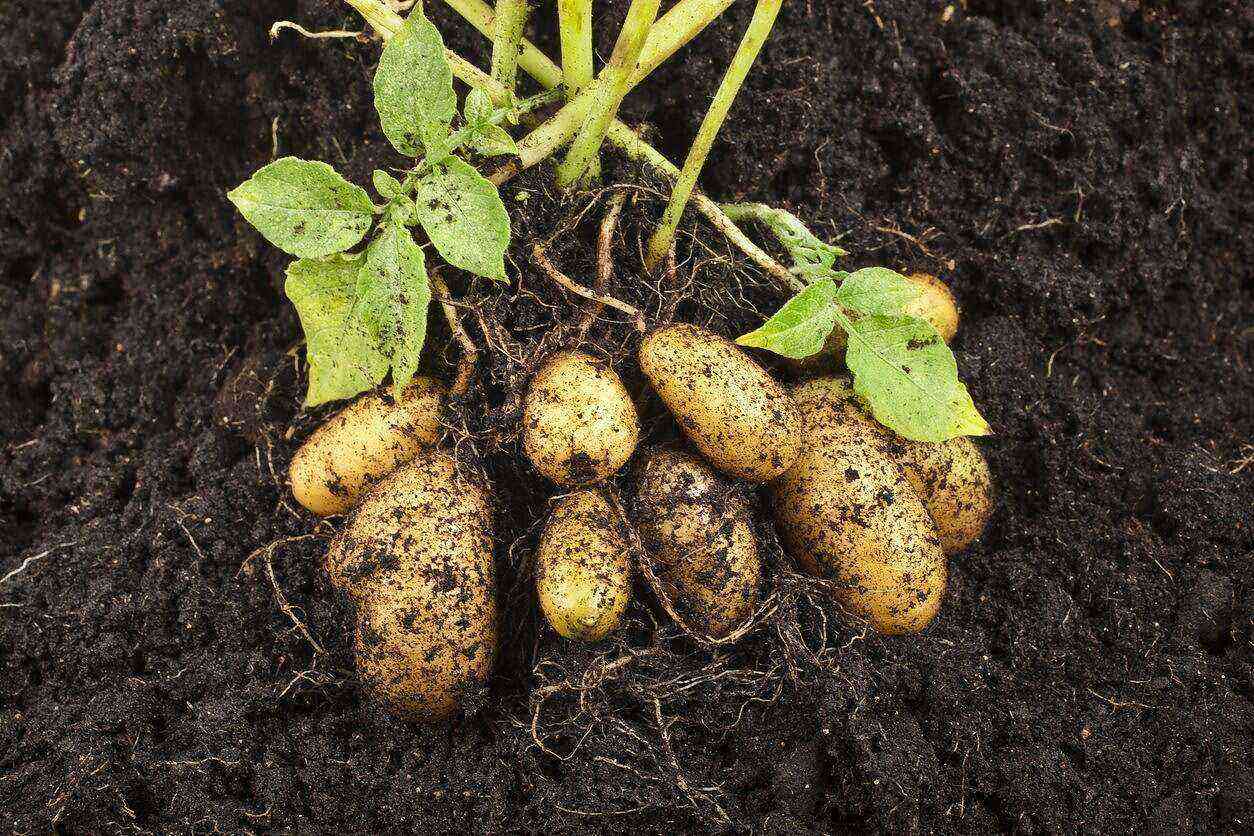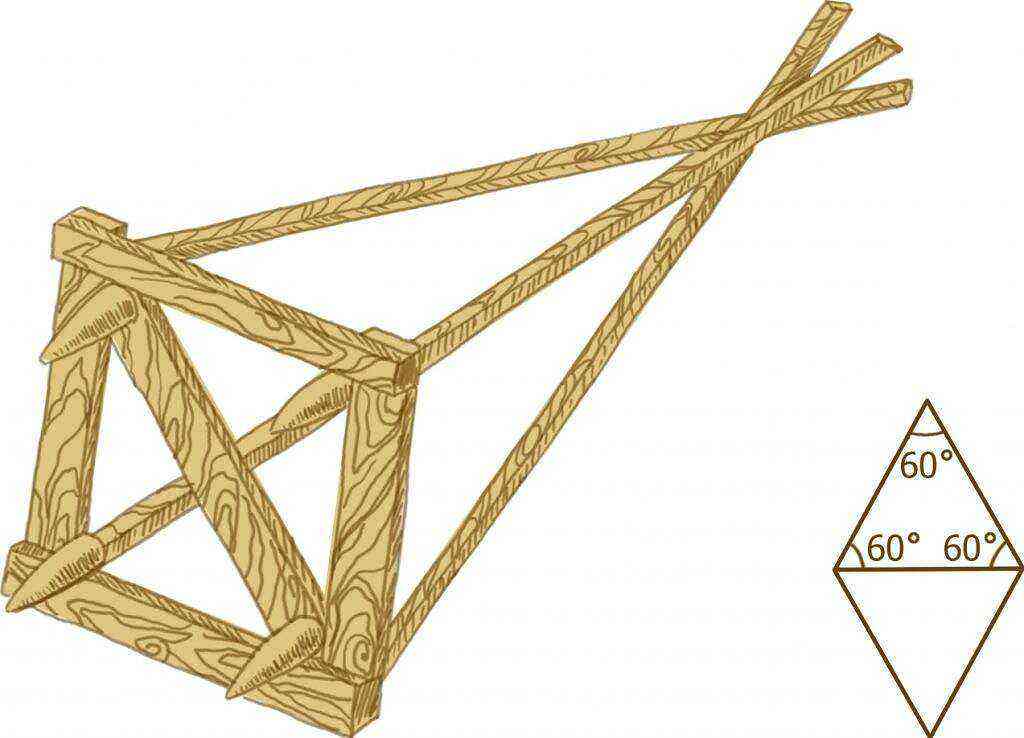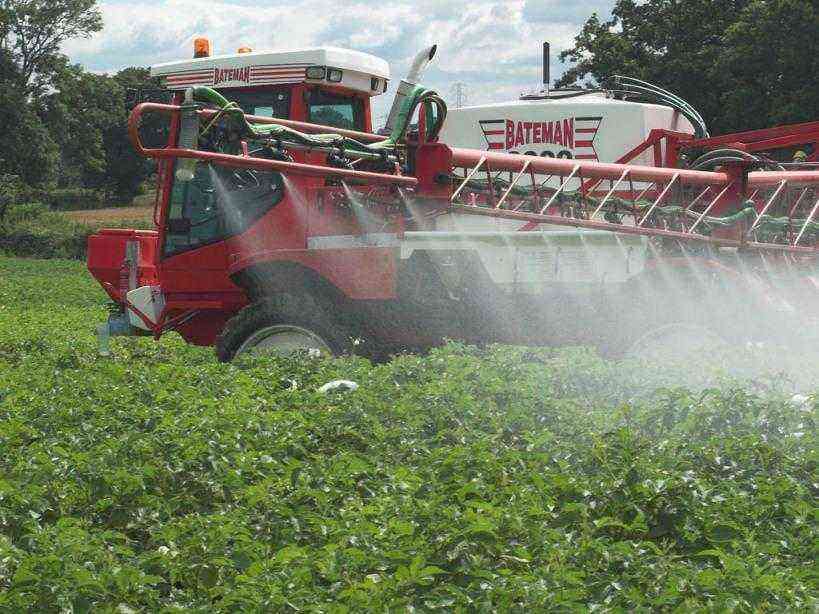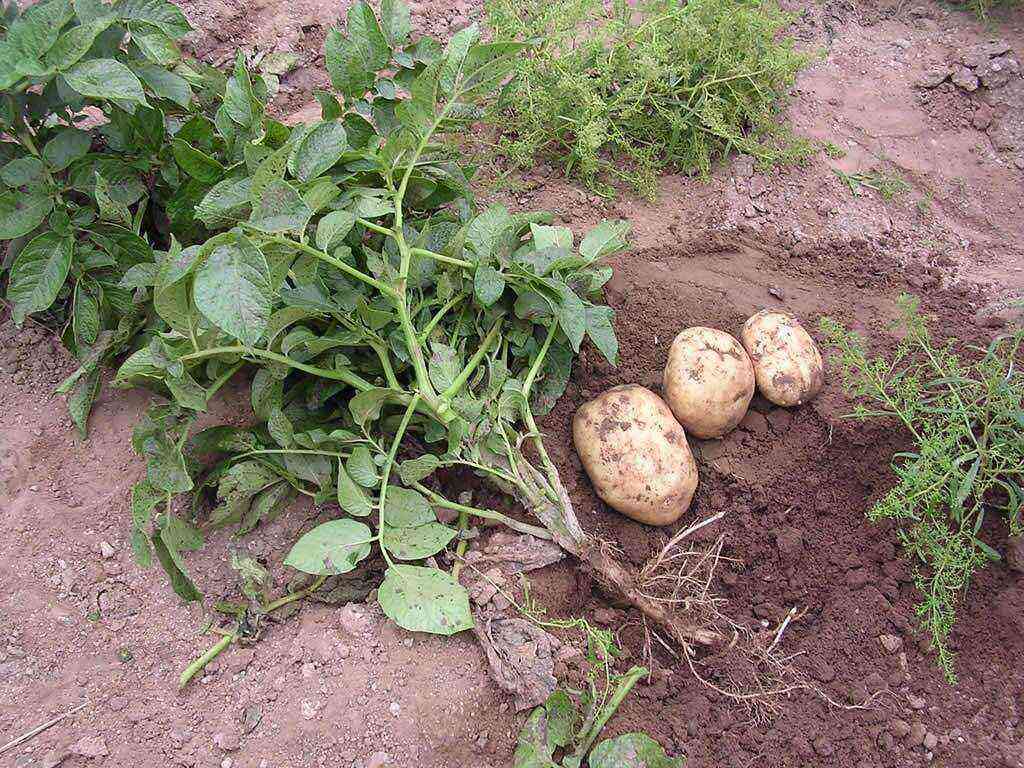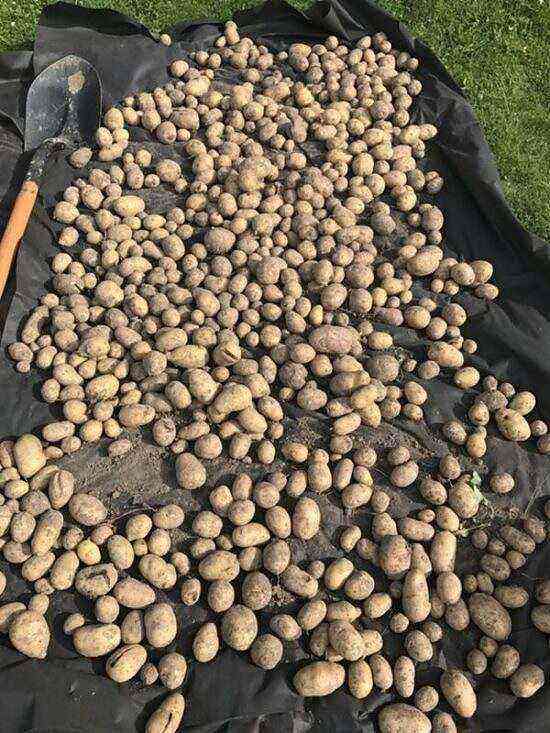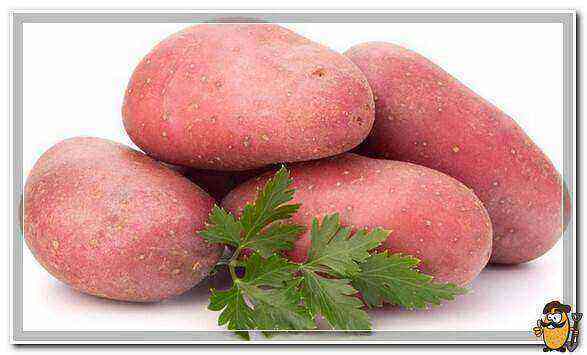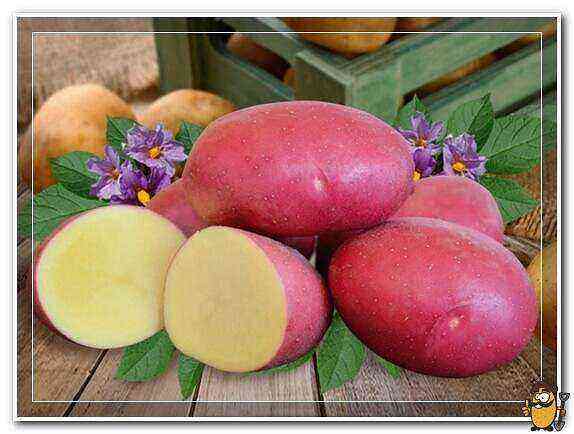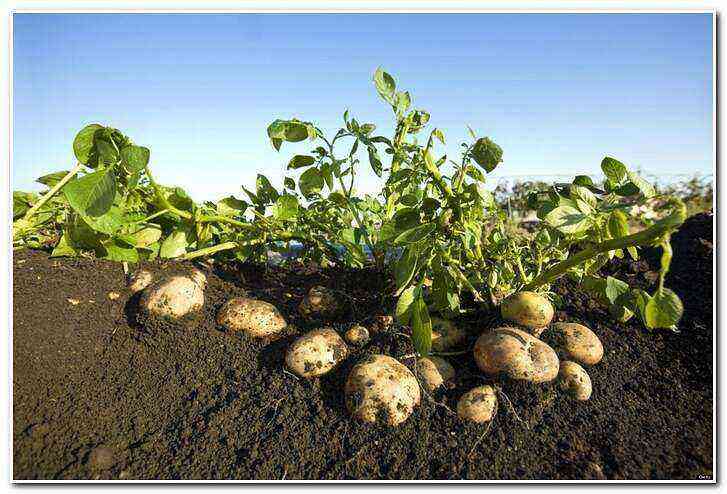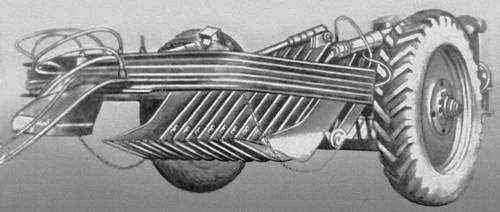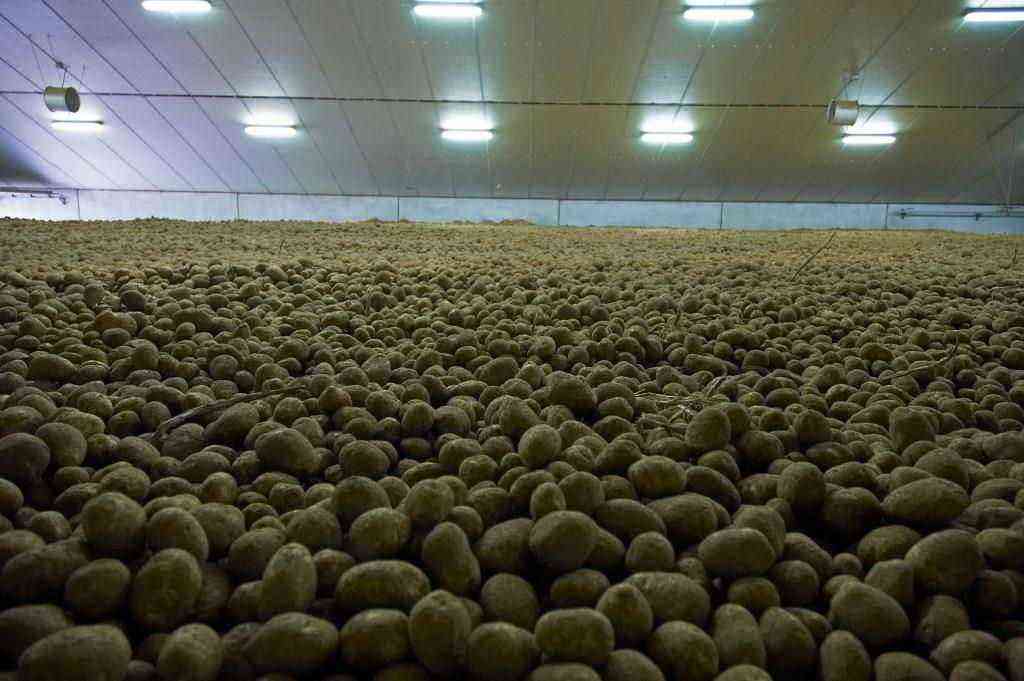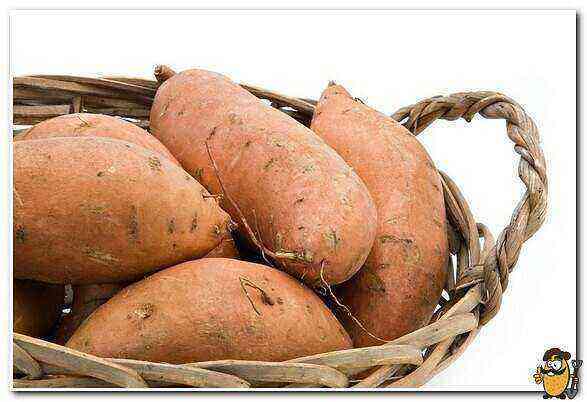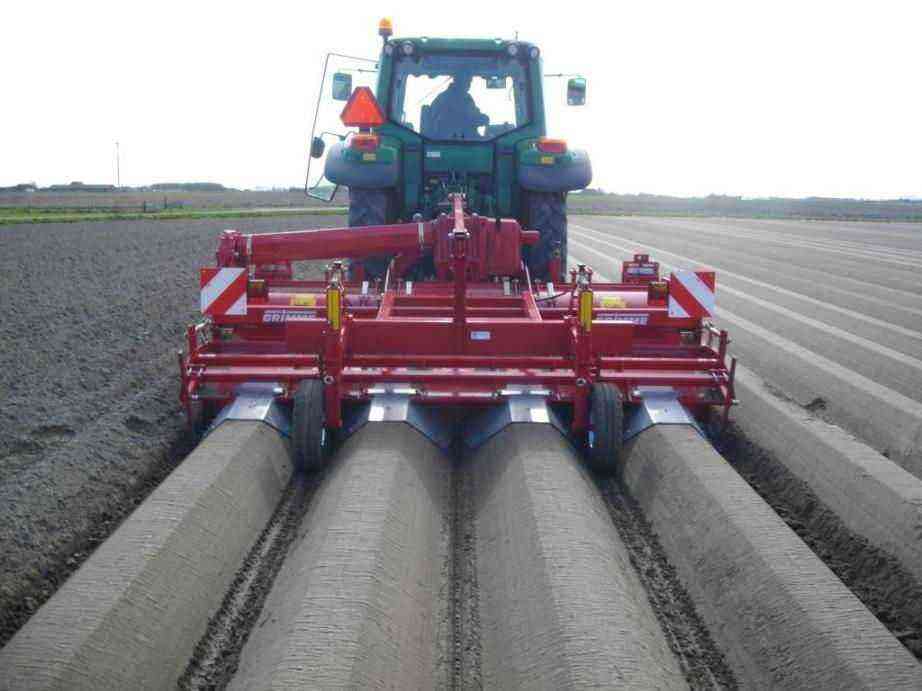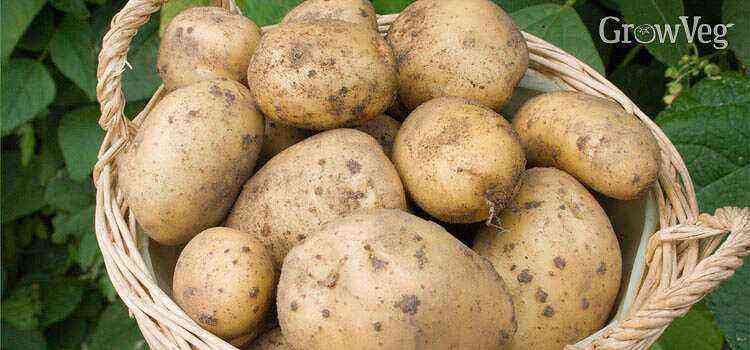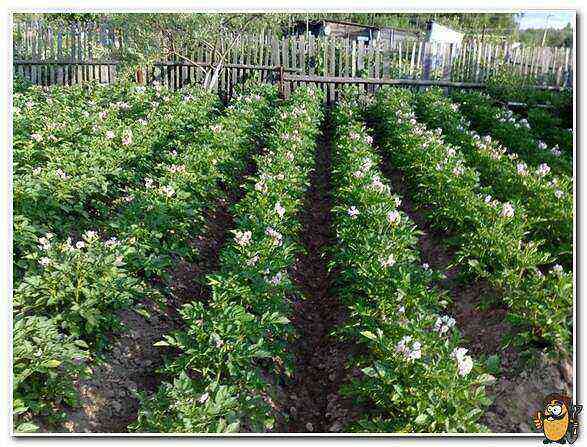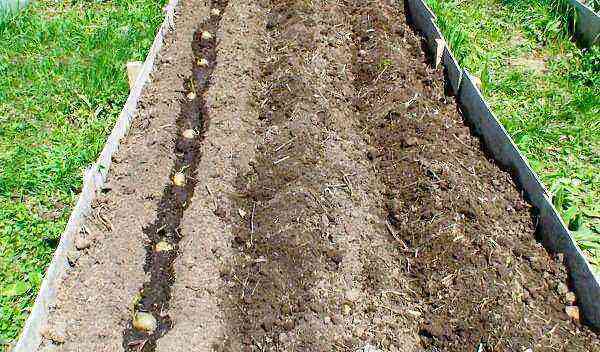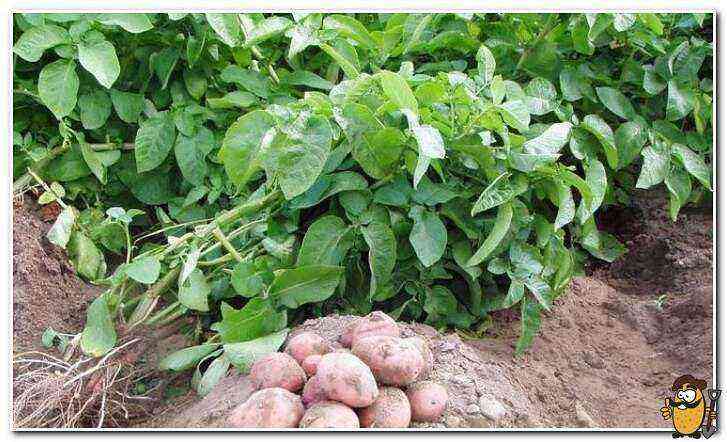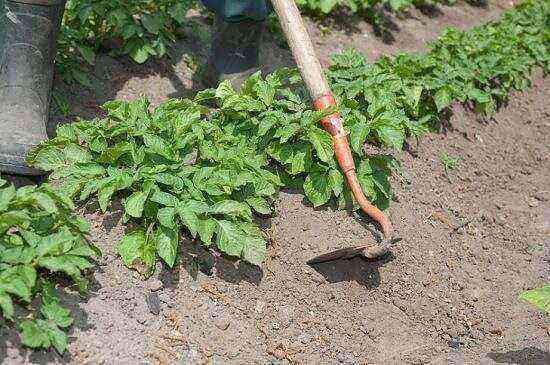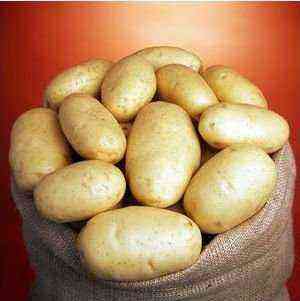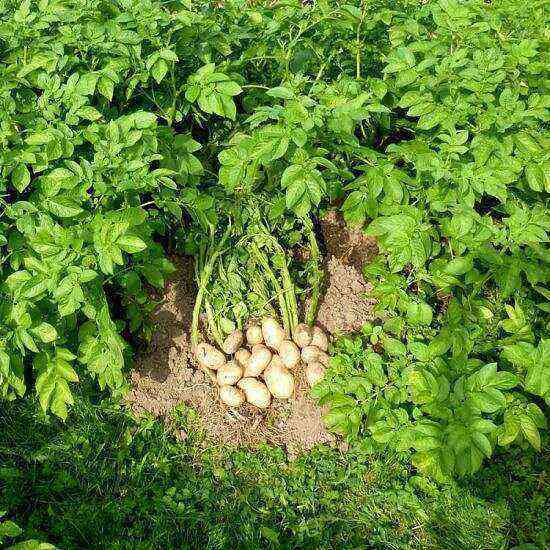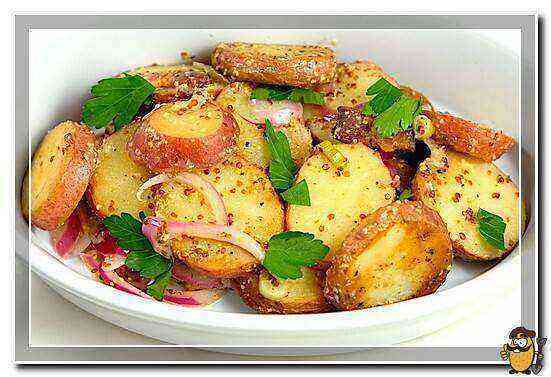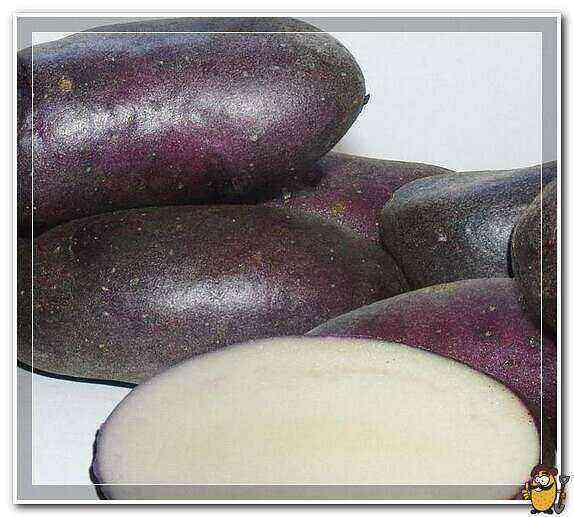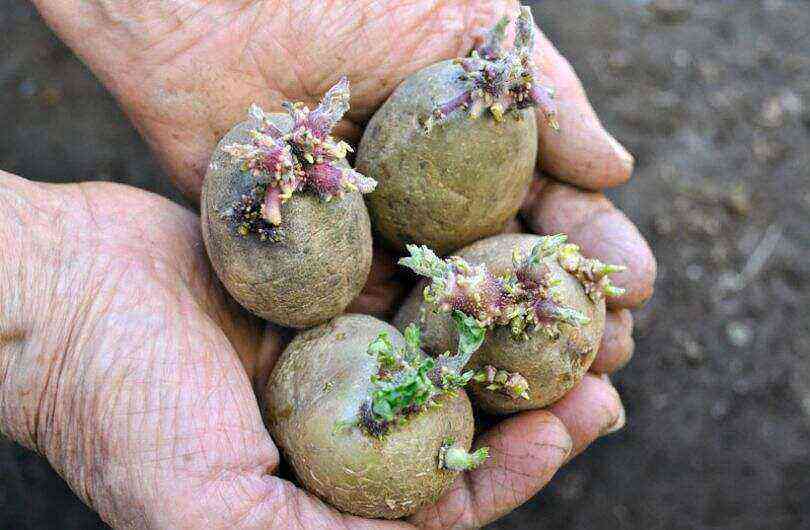It is painful to look at a potato plantation after a hail: broken or fallen stems with torn leaves are buried in the mud. But even if the potatoes are severely beaten with hail, do not despair. In most cases, at least part of the crop can be saved.
Preventive measures. The more powerful and healthier the shoots are, the more likely it is that they can be “reanimated” after the hail. Therefore, it is very important to fertilize the potatoes well when planting. To protect the stems at the base, the bushes are spud or mulched (with hay, straw, sawdust).
If the owner of the plot keeps pets, potato beds can be interspersed with plantings of fodder beets (4 rows of potatoes – 2 rows of beets). The powerful beet tops will take the hit and cover the young potato stalks.
The most vulnerable are the shoots of potatoes grown from botanical seeds. It is better to cover such plants with a white spanbond (or film) stretched over metal arcs.
Even such bushes can be tried to save
Care of potatoes after hail
With a small hail, mainly potato leaves are affected, but large hailstones break the stems. If the height of the destroyed shoots did not exceed 3-5 cm, the mother tubers in the ground are able to release new shoots to replace the dead ones. Crop losses will be up to 30%, but in the fall they will manage to harvest at least something. Lying stems of adult plants can rise, but for this they need to be fed and disinfected.
Warm weather usually sets in after the hail, the sun dries out the soil, and the earth is covered with a thick crust. Because of this, the tubers begin to choke. If the hail was very strong, it is better to handle the beds by hand: any mechanisms will further damage the stems that are randomly lying on the ground.
The day after the hail, the soil on the plantation is loosened, breaking the crust and simultaneously spilling the potatoes: this way it will be easier for the surviving shoots to rise. All damaged parts of the haulm must be removed. Then the broken stems will rather start branching and overgrow with new leaves.
Processing potato bushes
Restoration of potatoes after hail will be more successful if the next day the bushes are treated with Epin-Extra, which contains phytohormones that promote cell regeneration, branching of broken shoots and enhance plant immunity to late blight, fusarium and scab. In case of significant damage, “Epinom-Extra” is sprayed with potato tops 2–4 times with an interval of 7–10 days. The product is natural and can be used in organic farming.
“Epin-Extra” is preferable to “Zircon”: although the products have a similar effect, but “Epin-Extra” moves faster through the vessels of plants and improves immunity more effectively. If necessary, you can take analogs – “Silkom”, “Biostim”, “Gumi”.
Feeding of hail potatoes
The development of tubers is impossible without the products of photosynthesis that occurs in the aerial part of plants. Sick tops will recover faster if foliar or root feeding is carried out 2-3 days after the hail.
Rules for choosing fertilizers for feeding potatoes, beaten by hail:
- up to budding, nitrogen should dominate in the dressing, due to which the growth of tops is accelerated;
- during and after flowering, potatoes should be fed with potash fertilizers. Due to the excess nitrogen in top dressing, the tops grow tall and thick, and the tubers grow small.
If the hail broke the potatoes before budding, a urea solution is suitable for foliar feeding (at the rate of 20-25 grams per 10 liters of water). During and after flowering, it is better to use any of the complex fertilizers with a high potassium content, for example, AgroMaster 3:11:38.
Yeast feeding is extremely effective at any time:
- the first recipe: dissolve 1 kg of pressed yeast and 200 g of sugar in 5 l of water, cover with a napkin, leave in a warm place for a week. When watering, dilute 200 g of fermented liquid in 10 liters of water. Pour a liter of top dressing under each bush;
- the second recipe: put a kilogram of pressed yeast, 200 buckets of nettle, 5 liters of milk whey, a bucket of rotted cow dung into a 3-liter barrel. Pour everything over with water and mix. Insist in the sun for a week. Mix with water in a 1: 1 ratio before use. Pour a liter of top dressing under the bush.
Yeast feeding is rich in vitamins but causes potassium deficiency. Therefore, 2 days after the yeast, potash fertilizer (for example, “Rost-Concentrate Potassium”) or ordinary ash is introduced into the soil.
Also, in any phase of the growing season, it is allowed to feed hail-beaten potatoes with bird droppings (for 20 liters of water – 1 kg of droppings).
Protection of affected bushes from diseases and pests
It takes several weeks for potatoes to recover from hail, and broken stems are defenseless against diseases and pests. Partly the problem of resistance to fungal diseases is solved by spraying with “Epinom-Extra”. But if the summer is cool, it is better to additionally protect the plants from late blight.
You can treat the bushes with a weak solution of Bordeaux liquid. A more environmentally friendly product is unpasteurized whey, which is mixed with water in a 1: 1 ratio (otherwise the whey burns the leaves) and 3-4 drops of iodine are added. The biological product Fitosporin-M has also proven itself well.
It is necessary to take measures against pests, first of all – the Colorado potato beetle. Proponents of organic farming spray potato bushes with a strong infusion of walnut or garlic leaves, dust with corn flour. But in this case, it is better to use a chemical or bacterial agent, since the plants are very weakened and the drug needs to work as soon as possible. The most popular chemical insecticides are Aktara, Corado, Cardinal, Commander, Regent, Molniya, Tabu, Tanrek. Biologics: Fitoverm, Akarin, Colorado, Bitoxibacillin. If the insecticide is compatible with fertilizers (this is indicated on the package), pest control is combined with foliar feeding.
